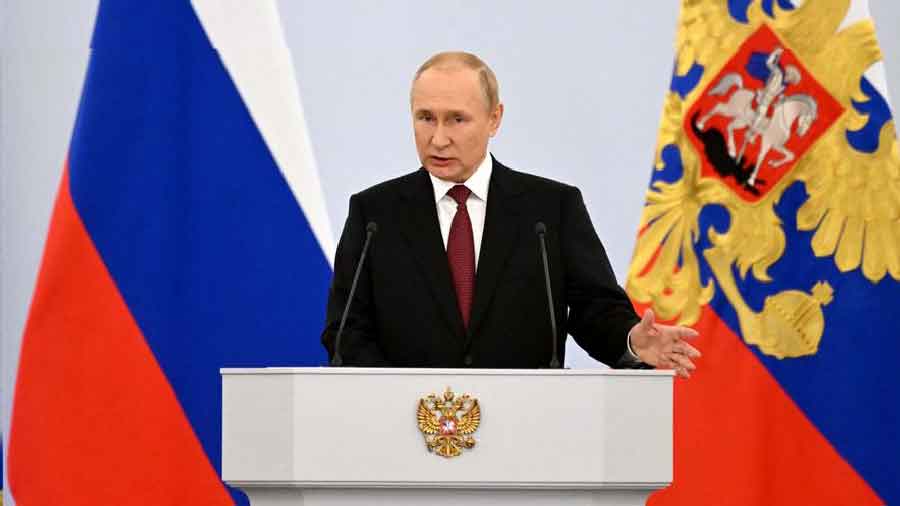For all his threats to fire tactical nuclear arms at Ukrainian targets, President Vladimir V. Putin of Russia is now discovering what the US itself concluded years ago, American officials suspect: Small nuclear weapons are hard to use, harder to control and a far better weapon of terror and intimidation than a weapon of war.
Analysts who have tried to game out Putin’s threats have come to doubt how useful such arms — delivered in an artillery shell or thrown in the back of a truck — would be in advancing his objectives.
The primary utility, many US officials say, would be as part of a last-ditch effort by Putin to halt the Ukrainian counteroffensive, by threatening to make parts of Ukraine uninhabitable.
The officials spoke on the condition of anonymity to describe some of the most sensitive discussions inside the administration. The scenarios of how the Russians might do it vary widely.
They could fire a shell six inches wide from an artillery gun on Ukrainian soil, or a half-ton warhead from a missile located over the border in Russia. The targets could be a Ukrainian military base or a small city. How much destruction — and lingering radiation — would result depends on factors including the size of the weapon and the winds. But even a small nuclear explosion could cause thousands of deaths and render a base or a downtown area uninhabitable for years.
Still, the risks for Putin could easily outweigh any gains. His country could become an international pariah, and the West would try to capitalise on the detonation to try to bring China and India, and others who are still buying Russian oil and gas, into sanctions they have resisted.
Then there is the problem of prevailing winds: The radiation released by Russian weapons could easily blow back into Russian territory. For months now, computer simulations from the Pentagon, American nuclear labs and intelligence agencies have been trying to model what might happen and how the US could respond. It is no easy task because tactical weapons come in many sizes and varieties, most with a small fraction of the destructive power of the bombs the US dropped on Hiroshima and Nagasaki in 1945.
In a fiery speech last week full of bluster and menace, Putin said those bombings “created a precedent”.
The modelling results, one official familiar with the effort said, vary dramatically — depending on whether Putin’s target is a remote Ukrainian military base, a small city or a “demonstration” blast over the Black Sea.
Great secrecy surrounds Russia’s arsenal of tactical arms. The weapon Europeans worry the most about is the heavy warhead that fits atop an Iskander-M missile and could reach cities in western Europe. Russian figures put the smallest nuclear blast from the Iskander payload at roughly a third of the Hiroshima bomb’s explosive power.
New York Times News Service











